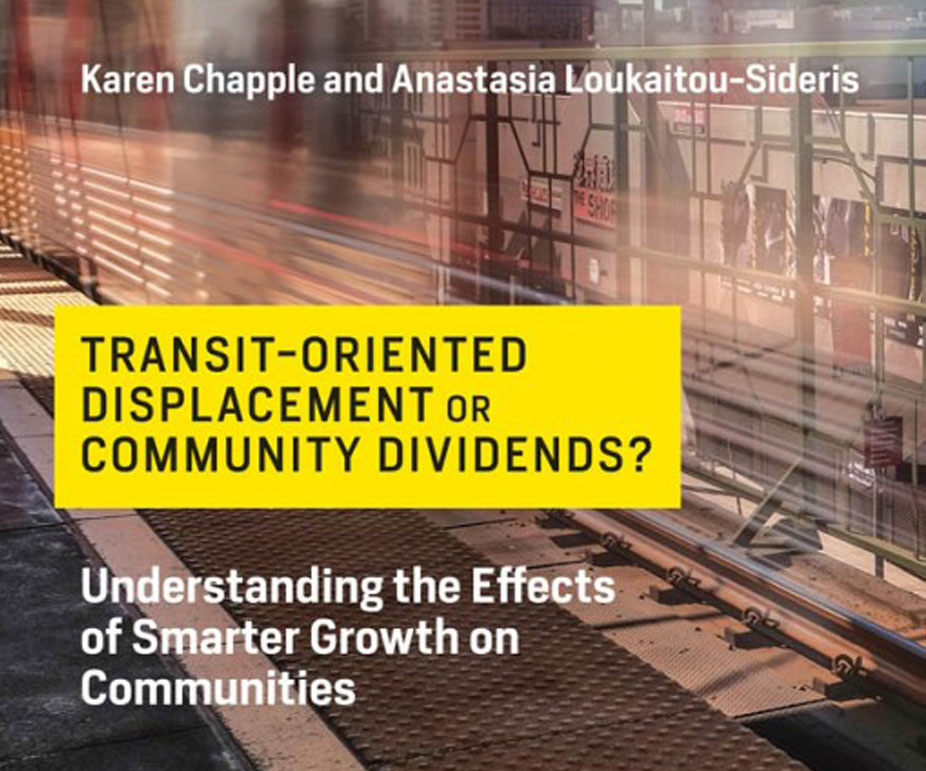
June 21, 2019; Shelterforce
How do you develop communities without displacing residents? As NPQ has covered, there are ways to do this, but they require sustained community engagement and foresight. For instance, NPQ has depicted successful preservation strategies in the Guadalupe neighborhood of Austin, Texas and the Chinatown neighborhood of San Francisco. We have also written about community land trust strategies—a mechanism for providing permanently affordable housing—in a number of areas, including such Northeast US cities as Philadelphia, New York, Baltimore, Washington DC, and Buffalo; the San Francisco Bay Area; Denver, Colorado; Asheville, North Carolina; and Florida.
Now, the Urban Displacement Project (UDP)—based at the University of California, Berkeley (with affiliates at the University of California, Los Angeles and Portland State in Oregon, and New York University) has produced a study that seeks to systematize their findings from across the country. A book published by involved faculty affiliated to the project, Transit-Oriented Displacement or Community Dividends? Understanding the Effects of Smarter Growth on Communities, has been released.
Writing in Shelterforce, Anna Cash and Miriam Zuk, both affiliated with UDP, summarize the book’s findings and highlight the key strategies identified, centering their recommendations around three P’s—protection, production, and preservation.
Protection refers to protection of tenants. Cash and Zuk identify many tools to achieve tenant protection, including rent control, just cause requirements for eviction, and guaranteeing a tenant’s right to counsel in eviction cases.
Production refers to the production of permanently affordable housing. Setting aside land is one way to do this. For example, Cash and Zuk write, in Portland, Oregon, the transit agency TriMet “acquired and banked land adjacent to a light rail expansion, and later dedicated it to subsidized affordable housing development, using transit money and federal funds.” Other tools include inclusionary zoning (requiring developers to make a certain percentage of the units they produce at below-market rates), and housing trust funds (dedicated funds for housing production).
Sign up for our free newsletters
Subscribe to NPQ's newsletters to have our top stories delivered directly to your inbox.
By signing up, you agree to our privacy policy and terms of use, and to receive messages from NPQ and our partners.
Preservation refers to preservation of existing affordable housing. For instance, note Cash and Zuk, “Funds for acquisition and rehabilitation can be leveraged in the lead-up to an investment to remove land from the speculative market, establish long-term affordability, and help stabilize neighborhoods.” Community land trusts, mentioned above, are also an important mechanism. Cash and Zuk cite Denver as one community that has prioritized developing community land trust housing in transit corridors.
Another approach is to empower tenants to petition nonprofits to acquire their buildings, something that San Francisco’s Small Sites program does. Cash and Zuk noted that, San Francisco’s program “actively seeks to support residents facing displacement pressure; as of 2016, 30 percent of the people whose units were acquired and stabilized were under active eviction proceedings, which were stopped through this program.”
First right of refusal for tenants to purchase their own buildings is another powerful mechanism. According to Cash and Zuk, Washington, DC’s Tenant Opportunity to Purchase Act, under which tenants can form cooperatives and condo associations to buy their buildings, has preserved over 1,500 units since 2015 alone.
How do you implement these policies? Cash and Zuk outline some key principles.
- Understand your community: “Analyzing available data, and collecting information by talking to residents, real estate agents, developers, and community groups, is the first step in understanding what’s needed,” Cash and Zuk explain.
- Engage the community: Key here, note Cash and Zuk, is “engaging community groups to better understand what residents’ most pressing challenges are and what support they need to be able to stay in their homes and communities.”
- Invest early: What’s most important here, explain Cash and Zuk, is to act proactively to minimize displacement impacts before investments are made public—for example, setting aside land for affordable housing near planned transit stops.
- Design for easy enforcement: With any policy, Cash and Zuk point out, “there is a difference between what’s on the books and what is enforced. It is essential to design and fund strong enforcement mechanisms in anti-displacement policies.”
- Organize: Community organizing, Cash and Zuk observe, “is key in getting good-fit policies passed in the first place.” It is also important for ensuring long-term implementation and accountability.
- Respect community history: Here, the key is to acknowledge that communities burdened by past discriminatory policies, such as redlining, must be given legally the time and space to “plan for an inclusive future for their neighborhood.”
Of course, UDP’s communities—the San Francisco Bay Area; Los Angeles; Portland, Oregon; and New York City—have all been heavily impacted by gentrification and displacement. The authors are under no illusions as to the difficulty of the challenges. Still, Cash and Zuk remain hopeful. “There has been a dramatic increase in recognition of the problems of gentrification and displacement over the past five years. This recognition is coupled with an increase in organizing and coalition-building work,” they note. And, they add, “When communities are at the table in planning processes, armed with accessible data and knowledge about effective policy strategies, they can help ensure that investments are leveraged to create more inclusive futures.”—Steve Dubb













